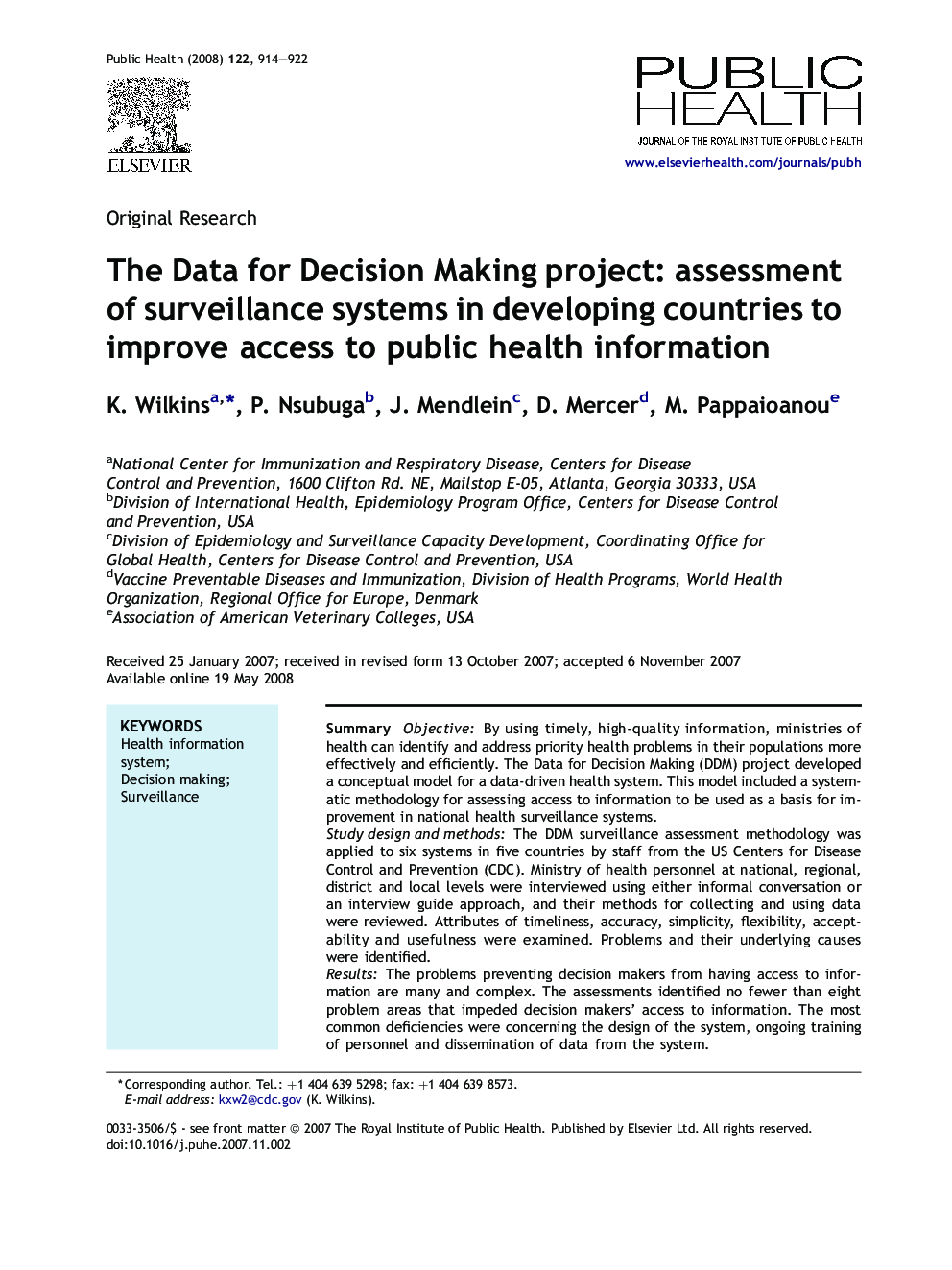| کد مقاله | کد نشریه | سال انتشار | مقاله انگلیسی | نسخه تمام متن |
|---|---|---|---|---|
| 1089061 | 951628 | 2008 | 9 صفحه PDF | دانلود رایگان |

SummaryObjectiveBy using timely, high-quality information, ministries of health can identify and address priority health problems in their populations more effectively and efficiently. The Data for Decision Making (DDM) project developed a conceptual model for a data-driven health system. This model included a systematic methodology for assessing access to information to be used as a basis for improvement in national health surveillance systems.Study design and methodsThe DDM surveillance assessment methodology was applied to six systems in five countries by staff from the US Centers for Disease Control and Prevention (CDC). Ministry of health personnel at national, regional, district and local levels were interviewed using either informal conversation or an interview guide approach, and their methods for collecting and using data were reviewed. Attributes of timeliness, accuracy, simplicity, flexibility, acceptability and usefulness were examined. Problems and their underlying causes were identified.ResultsThe problems preventing decision makers from having access to information are many and complex. The assessments identified no fewer than eight problem areas that impeded decision makers' access to information. The most common deficiencies were concerning the design of the system, ongoing training of personnel and dissemination of data from the system.ConclusionsTo improve the availability of information to public health decision makers, it is recommended that: (a) surveillance system improvement begins with a thorough evaluation of existing systems using approaches outlined by the CDC and the Health Metric Network of the World Health Organization; (b) evaluations be designed to identify specific causes of these deficiencies; (c) interventions for improving systems be directly linked to results of the evaluations; and (d) efforts to improve surveillance systems include sustained attention to underlying issues of training and staff support. The assessment tool presented in this report can be used to facilitate this process.
Journal: Public Health - Volume 122, Issue 9, September 2008, Pages 914–922